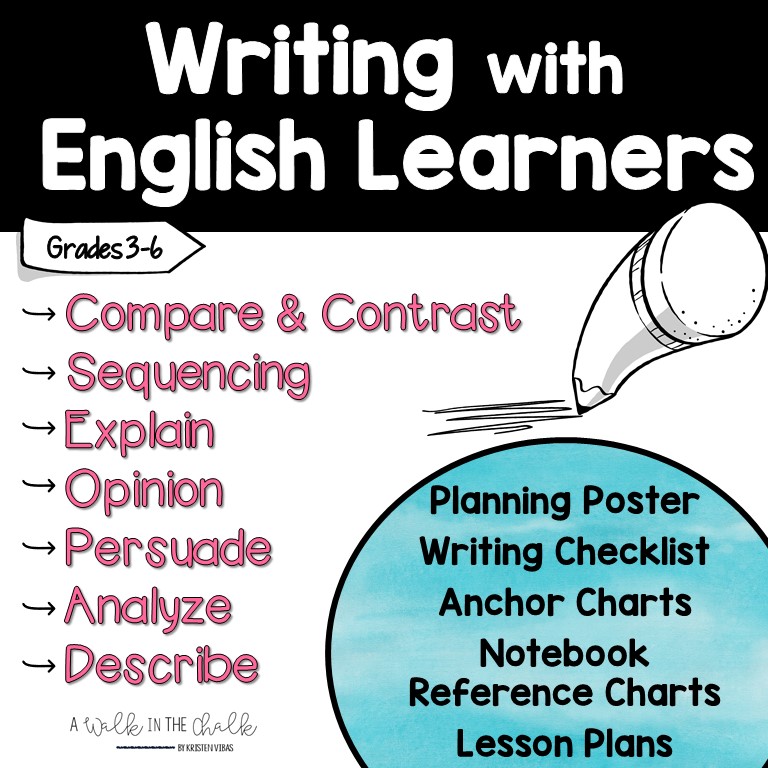
Why do teachers need tips for teaching English learners? Students who are learning a new language while simultaneously learning grade level curriculum require supports to navigate the two successfully. The bonus in knowing what these supports are is realizing that what's good for ELs is good for ALL students.
As educators we are tasked with the responsibility of ensuring that ALL of our students learn. Here are a few best practice approaches for teaching multilingual students that support language learning AND content instruction so that students are provided with the supports they need to be successful in the classroom. 🙌
Ten Tips for Teaching English Learners
- Establish a comfortable and safe learning environment where students feel respected, heard, and supported. A smile and words of encouragement go a long way!
- Use visuals, real-life objects, and gestures to explain concepts and vocabulary.
- Speak slowly and clearly, avoiding idioms and slang words.
- Incorporate hands-on activities, group work, and games to keep students engaged and motivated.
- Model outcomes. Show students, or demonstrate, what they are tasked with doing.
- Encourage students to ask questions, seek clarification, and express their opinions with the support of sentence frames and sentence starters.
- Use assessment tools that match students' language proficiency by allowing for alternative ways of measuring progress. We want students to show what they've learned, not prevented in doing so due to the language load of an assessment.
- Translate key words, concepts and main ideas for newcomers. Use students L1 (first language) as a tool for learning.
- Tap into experiences and background knowledge and connect it to new learning.
- Celebrate students' cultural diversity and use it as a resource to enhance their learning experience.
I think an important "tip" I'd add to this list would be -- be mindful that learning a new language while learning grade level content is challenging and takes time. Best practices, like the ones listed above, should be evident in all classrooms with ELs.
It's also important to have an asset based mindset when teaching English learners. They bring a lot of knowledge and experiences with them to the classroom. Keep focus on what students CAN DO, not what they can't do yet.
Lastly, ELs don't necessarily need an intervention, extra work, or special education testing/services due to their English language proficiency. Educators must have some knowledge of the language acquisition process, and the stages within, when teaching ELs.
Advocating for what's best for our students is at the heart of teaching ELs.❤
If you'd like to provide your staff with weekly tips for supporting English leaners, here is a resource for you. At my school, the ESOL team includes a bi-weekly tip in the school's staff newsletter. It's one of the strategies we are incorporating to build capacity within our school that support teachers of ELs by sharing instructional best practices.
Happy teaching,

























No comments